In this series, I aim to demystify modern spirituality, demonstrating that ancient understandings of the human condition are not exclusive to the ‘enlightened.’ Instead, they provide an intelligent and effective way of living for everyone when understood and integrated properly.
Let’s be honest—modern life can feel overwhelming. Whether it’s chasing goals, juggling responsibilities, or navigating the constant noise around us, pressure has become a daily companion. What if something as simple and natural as your breath could help you manage pressure, regain clarity, and reconnect with your deeper potential?
Breathwork isn’t just for yogis or spiritual seekers. It’s a grounded, science-backed practice that anyone can tap into—especially in high-pressure environments like business, creative work, or personal transformation. In this article, we’ll explore how intentional breathing techniques can help you not only stay calm under pressure, but also unlock hidden energy, sharpen your focus, and create space for lasting growth.
Not Spiritual — Scientific
Breathwork may sound mystical, but at its core, it’s a physiological tool—deeply rooted in science. The way we breathe directly affects our nervous system, brain chemistry, and even our emotional state. When you’re stressed or anxious, your body naturally shifts into “fight or flight” mode—your heart rate increases, your breathing becomes shallow, and your brain gets flooded with stress hormones like cortisol.
Intentional breathwork interrupts this cycle. By slowing your breath, lengthening your exhales, or engaging in rhythmic breathing, you activate the parasympathetic nervous system—the one responsible for rest, digestion, and recovery. This shifts your body into a state of calm, helping you manage pressure more effectively and think with greater clarity.
Studies show that certain breath patterns can lower blood pressure, reduce anxiety, boost focus, and even improve heart rate variability (a key marker of resilience). It’s not magic—it’s your biology working for you.
Whether you’re pitching a business idea, navigating a creative block, or simply trying to stay present in a chaotic day, breathwork gives you a powerful tool to regulate your internal state—quickly, naturally, and without needing to “go full monk.”

The Earliest Known Version of Breathwork
Long before it was studied in labs or featured in wellness apps, breathwork was quietly practiced by ancient civilizations across the globe. From pranayama in ancient India to the controlled breathing of Qigong in China, and even breath-focused meditations in early Greek philosophy, humans have long understood that the breath holds more than just oxygen—it holds power.
These early systems weren’t just spiritual rituals; they were practical tools for managing the mind, body, and energy. Ancient yogis believed that by mastering the breath, you could master your internal world. And while they may have lacked modern neuroscience, their insights align closely with what science now confirms: the breath is a direct bridge between our autonomic nervous system (which controls stress and calm) and our conscious control.
What’s fascinating is that these ancient practices emerged independently in many parts of the world, pointing to a universal truth: humans have always turned to the breath in times of pressure, transformation, and potential.
Today, we have the opportunity to re-integrate this ancient wisdom—with the backing of science—into our modern lives. And the best part? It costs nothing, requires no special equipment, and begins with something you’re already doing: breathing.
Practical Applications: How to Incorporate Breathwork into Daily Life
You don’t need a retreat or a meditation cushion to benefit from breathwork. In fact, the beauty of it lies in its simplicity and accessibility. Just a few minutes a day can make a noticeable difference in how you handle pressure, focus, and show up in both work and life.
Here are some simple, practical ways to incorporate breathwork into your routine:
1. Morning Reset (2–5 minutes)
Before checking emails or diving into your to-do list, try box breathing: inhale for 4 counts, hold for 4, exhale for 4, hold again for 4. This calms your system, sets a focused tone for the day, and helps activate a sense of control and presence.
2. Pre-Meeting Nerves
Feeling the pressure before a big call or presentation? Take 10 deep belly breaths—inhale through your nose for 5 counts, exhale through your mouth for 7. This activates your parasympathetic nervous system and keeps anxiety from hijacking your performance.
3. Creative Flow Boost
Stuck in a mental block? Try alternate nostril breathing (Nadi Shodhana)—a traditional method known to balance brain hemispheres and clear mental fog. Just a few rounds can improve clarity and restore creative energy.
4. Midday Reset
When the afternoon slump hits, try a round of energizing breathwork: inhale sharply through the nose and exhale forcefully through the mouth (called Breath of Fire or Kapalabhati) for 30 seconds. It boosts alertness and brings fresh oxygen to the brain—without needing another coffee.
5. Evening Wind-Down
To help your body shift into rest mode, try a 4-7-8 breath: inhale for 4, hold for 7, exhale slowly for 8. This helps reduce stress hormones and signals your body it’s safe to relax and recover.
No matter your schedule, breathwork can fit into small pockets of your day. It’s not about doing it perfectly—it’s about coming back to yourself, one breath at a time.
Conclusion: Your Breath Is Your Power
In a world that constantly pulls us outward—toward productivity, performance, and pressure—breathwork offers a way back in. It’s not a trend or a mystical secret. It’s a built-in, biological system we’ve had access to all along—one that helps us manage stress, sharpen focus, unlock potential, and reconnect with ourselves in real-time.
You don’t need hours of free time or a spiritual awakening to benefit from it. You just need a few intentional moments, a little curiosity, and the willingness to pause.
So the next time life feels overwhelming, remember: your most powerful tool is already with you.
Just breathe—on purpose.



